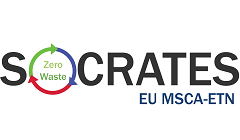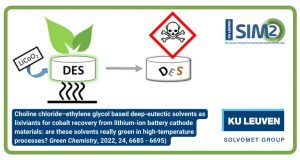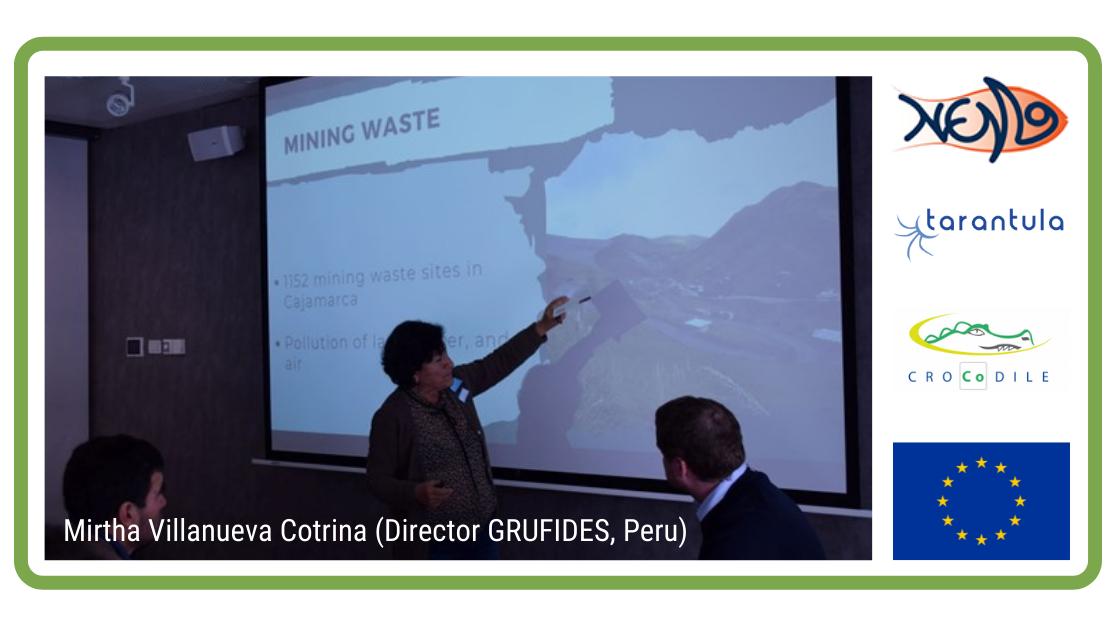On April 1-5, 2019, the Sixth International Slag Valorisation Symposium took place in Mechelen, Belgium. This Symposium aims at contributing towards near zero-waste processing and closing material loops in the metallurgical sector through creating applications for slags, which are produced as residues of high temperature metallurgical processes. SVS VI welcomed more than 200 persons from university, research organisations and industry. This edition brought particularly good news as different pioneering projects have commercialised a new generation of “cleaned” slags. Green slag valorisation has been transformed from an academic concept into an industrial success story. In this article we review a number of these success stories and discuss the merits of legislation and green public procurement in view of stimulating the use of secondary (slag) resources (LM/PTJ, Leuven, 10/4/2019)
Use of untreated slags under pressure
Slag valorisation has been around for some years now. The main industrial success story has been created by the steel industry where ground granulated blast furnace slag (GGBFS) has been applied in low-carbon “blast furnace cements”. This example of a high-added value form of slag valorisation has become general practice.
However, the application of other types of slags – such as BOF and EAF slags form the steel industry and slags from the stainless steel and non-ferrous (Cu-Pb-Zn-Ni) industry – remains rather limited, certainly with respect to high-added value slag valorisation. At best, non-BF slags have been applied as gravel for road bases or as aggregates in the construction industry.
However, upcoming national and EU regulation is prescribing more strict limits with respect to residual metal content (e.g. Pb, Mo,..) in these slags. This evolution endangers the use of many (untreated types of) slags in these low-added value applications. As a result, many companies are forced to landfill or stockpile their slags, which forms an important additional cost and risk for their activities.
Slags 2.0: from waste to clean “co-product”
The good news is that during the last decade major efforts have been performed to “engineer” slags to cope with more strict environmental regulations. The goal has been to reduce the residual content of metals to below well-defined thresholds.
In addition to this, engineering of slag chemistry and mineralogy paves the way to use slags as a raw material in high-value applications. Two examples can be highlighted: (1) supplementary cementitious material (SCM) that can be blended with Portland cement clinker, (2) alternative binders, such as “inorganic polymers” or carbonate-based binders.
Today, the first cases of industrial production of a new generation of “cleaned” and “engineered” slags are becoming visible. These slags – “Slags 2.0” – should no longer be considered as waste but rather as industrial by-products or “co-products” as proposed during SVS VI.
Metallo’s Koranel®
The name “mineral co-product” could also be proposed as an alternative to slags, as little difference exists with minerals produced by primary extraction. A key example is the company Metallo in Belgium (http//www.metallo.com), who installed a plasma fuming installation to recover zinc from its slags while at the same time reducing the lead content from around 1% to below 300 ppm, which is in line with future regulations.

Koranel(R) (Credits photo: Metallo)
Since 2018, Metallo is producing fumed slag, under the trademark Koranel®, for which it was awarded the “Global Slag Product of the Year” (during the 14th Global Slag Conference in Aachen). [1] The slag is currently mainly applied for sand blasting, but extensive R&D has been performed to use the slags in other applications, such as in cementitious binders and engineered products. Extensive industrial scale testing has been performed to produce these materials, opening a road to wide-scale use of non-ferrous slags in the construction industry.
Novel binders from slags: in the market today!
After extensive R&D and industrial testing on the use of (non-blast furnace type) slags in novel binders and blended cements, the first slag based products have entered the market. Examples are the inorganic polymer based cements, based on fly ash, blast furnace slag and other types of slags, as produced by Sqape (http://www.sqape.nl/), commercialised through a joint venture of the Dutch company Cementbouw (part of the CRH group) and the company mineralz (part of the Renewi group), now commercially available on the Dutch market.
Another example are binders formed by the carbonation of stainless steel slags as produced by Orbix (https://www.orbix.be/nl). At the moment, Orbix is setting up a cooperation with Deruwbouwgroup (https://www.ruwbouw.nl/, part of the CRH group), to bring stainless steel slag-based construction products on the Dutch market. The material is called “Compensatiesteen” (in Dutch), which can be translated as “compensation stone”. As CO2 is used for the carbonation of the stainless steel slag to form a binder, production of the material contributes to CO2 reduction and, at the same time, the material production has a lower carbon footprint compared to other construction materials.
Legislation as a driver
In the implementation of slag-based products, legislation is considered to be key. An important barrier for slags to enter the construction market is the fact that current legislation almost exclusively allows its use in Portland cement clinker, as this material is currently dominating the market.
During SVS VI it was stressed that a shift has to be made from “composition-based” regulations, i.e. where it is defined what the composition of a binder or construction element should be, to “performance-based” regulations, where performance criteria for the end product are defined, such as strength and durability.
While regulation can form a barrier, it can also be a driver for new products to enter the market. This is not always straightforward though. On the one hand, more severe regulation with respect to residual metal content (e.g. Pb) in slags can lead, in some cases, to a situation where several industries will not be able to sell their slags any more (even leading to forced landfilling). [2] On the other hand, stringent regulation has, in other cases, led to slags being better engineered in view of a high-value application. This has opened multiple new routes for their use creating added value. It is clear that there is no one-size-fits-all approach as each case may be different and require tailored approaches based on a sound knowledge of metallurgical and thermodynamic principles.
Green public procurement
Regulation is not the only way how slag valorisation may be promoted. Another possibility is to use green public procurement. One of the most striking examples where government intervention has promoted the use of secondary resources can be seen in the Netherlands. In this country the decision of the public authorities to favour construction materials with low CO2 footprints in public construction works has aided slag-based binders such as the “Compensatiesteen” to enter the Dutch market. Clearly, this is the way forward which needs to be followed by other countries, certainly in Europe.
A look at the future?
After more than a decade of R&D in universities, research organisations and industry, a positive balance can be made. Apart from blast furnace slags, other slag types are starting to find their way into the market. Pioneering companies have implemented processes to create a new generation of clean slags. These “Slags 2.0” can be considered as high-value co-products. At this point, in most of EU Member States, the slag producing industry has performed or is running R&D projects to engineer their slags, to cope with more stringent legislation, and to find high-value application for their slags. Novel slag-based binders and construction materials start to find their entry in the market, substantially increasing the value of slags.
While the success stories of actual industrial implementation have occurred, it is only a matter of time for the mainstream industrial players to follow the path set by these pioneering companies. Government intervention can be a major driver through implementation of strict norms for slag composition and/or the requirement of construction materials in public construction works to have lower CO2 footprints.
Harmonisation of legislation and green public procurement at the EU level, using for instance the best practices in frontrunning countries such as the Netherlands, will further aid the implementation of green slag valorisation as being a standard practice in industry. This implies that the metallurgical industry will have a valuable contribution to the transition to a low-carbon, circular economy.
Footnotes
(1) For more info, see: https://metallo.com/insights/a-world-s-first-in-recycling-at-metallo
(2) For instance, if lowering the lead content in a slag below a certain threshold (to allow its use as a secondary resource) requires so much extra energy (and associated CO2 emissions) to fume out the lead, then that is, overall, not a wise strategy from an environmental point of view. This example shows the importance of a science-based approach to regulation. More information about the importance of lead metallurgy can be found in the recent ETN SOCRATES Policy Brief: https://kuleuven.sim2.be/5535-2/
More information about SVS VI
Visit the Symposium website: https://slag-valorisation-symposium.eu/
About the authors
 Lieven Machiels is a Research Manager in the SOLVOMET group (https://solvomet.eu/) within the SIM² KU Leuven Research Cluster (http://www.sim2.be). He has a PhD in Geology, worked 6 year as a Post-doctoral Fellow in Metallurgy and Materials Engineering and is now working as a Research Manager in the SOLVOMET group at the KU Leuven Department of Chemistry. He is a passionate researcher, with a research focus on sustainable development in the raw materials sector, among which is the mining, metallurgical and cement and building materials sector. Central in his research is “near-zero-waste metallurgy”, i.e. closing material loops in the mining & metallurgical sector through enhancing metal recovery, concentrating hazardous components and valorisation of mineral by-products in metallurgical processes.
Lieven Machiels is a Research Manager in the SOLVOMET group (https://solvomet.eu/) within the SIM² KU Leuven Research Cluster (http://www.sim2.be). He has a PhD in Geology, worked 6 year as a Post-doctoral Fellow in Metallurgy and Materials Engineering and is now working as a Research Manager in the SOLVOMET group at the KU Leuven Department of Chemistry. He is a passionate researcher, with a research focus on sustainable development in the raw materials sector, among which is the mining, metallurgical and cement and building materials sector. Central in his research is “near-zero-waste metallurgy”, i.e. closing material loops in the mining & metallurgical sector through enhancing metal recovery, concentrating hazardous components and valorisation of mineral by-products in metallurgical processes.
 Peter Tom Jones is a KU Leuven IOF (Industrial Research Fund) Senior Research Manager in the field of sustainable metallurgy. Jones is co-founder of the Centre for High Temperature Processes and Sustainable Materials Management, a Centre focusing on applied research, structurally funded through Umicore, Aperam, Recmix, Metallo and Group Machiels. Together with Prof. Koen Binnemans he is the founder of the SOLVOMET Industrial Service Centre (https://solvomet.eu/). Since 2014 he is the General Coordinator of the interdisciplinary SIM² KU Leuven Research Cluster (http://sim2.be). On the Flemish level he was the lead author of the approved SIM MaRes Programme. On the EU level, Jones is the General Coordinator of the EU H2020 MSCA-ETN NEW-MINE project on Enhanced Landfill Mining, which was developed through EURELCO (http://www.eurelco.org/).
Peter Tom Jones is a KU Leuven IOF (Industrial Research Fund) Senior Research Manager in the field of sustainable metallurgy. Jones is co-founder of the Centre for High Temperature Processes and Sustainable Materials Management, a Centre focusing on applied research, structurally funded through Umicore, Aperam, Recmix, Metallo and Group Machiels. Together with Prof. Koen Binnemans he is the founder of the SOLVOMET Industrial Service Centre (https://solvomet.eu/). Since 2014 he is the General Coordinator of the interdisciplinary SIM² KU Leuven Research Cluster (http://sim2.be). On the Flemish level he was the lead author of the approved SIM MaRes Programme. On the EU level, Jones is the General Coordinator of the EU H2020 MSCA-ETN NEW-MINE project on Enhanced Landfill Mining, which was developed through EURELCO (http://www.eurelco.org/).








